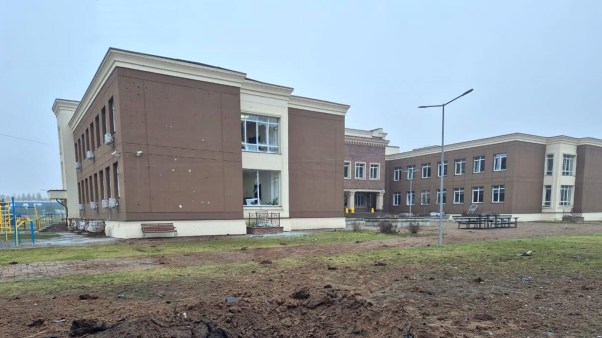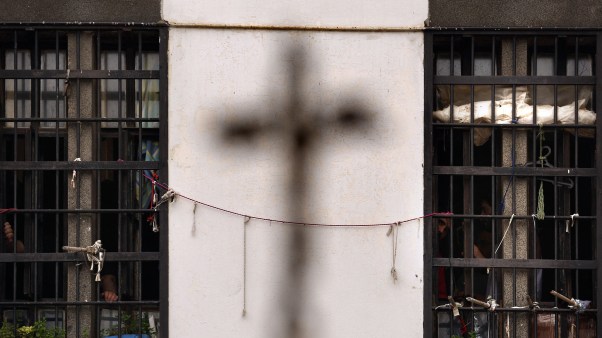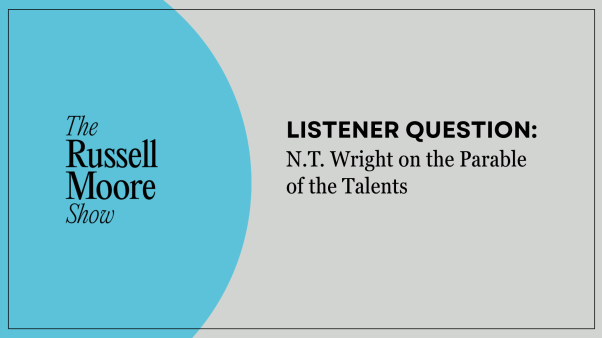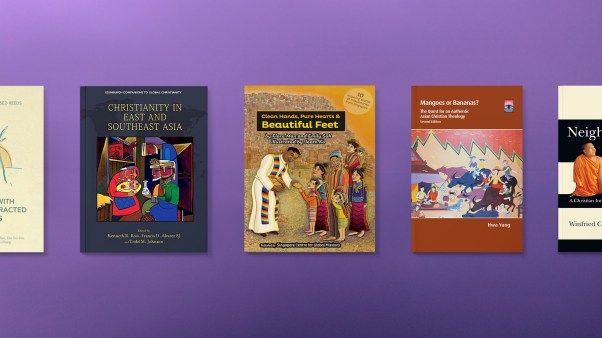“Conflict” is a troublesome word to describe a society. But increasingly across advanced global economies—and particularly the United States—their societies believe it is the correct label.
If there is any good news, religious conflict lags behind.
The Pew Research Center surveyed almost 19,000 people in 17 North American, European, and Asia-Pacific nations this past spring about their perception of conflict across four categories: between political parties, between different races and ethnicities, between different religions, and between urban and rural communities.
The US ranked top or high in each.
A global median of 50 percent see political conflict, 48 percent see racial conflict, 36 percent see religious conflict, and 23 percent see urban-rural conflict.
But in the US, 9 in 10 viewed political conflict as “serious” or “very serious.”
Asian nations varied considerably. South Korea matched the US at 90 percent seeing serious political polarization, with Taiwan third at 69 percent. Singapore was lowest overall at 33 percent, while Japan was 39 percent.
France (65%), Italy (64%), Spain (58%), and Germany (56%) followed Taiwan.
 A National Council of Churches (NCC) official has refused to allow the Institute on Religion and Democracy (IRD) to examine the council’s financial records. The records earlier were made available to two staff members of the United Methodist Reporter.The IRD, a research organization known for its attacks on the NCC, had tried to obtain information regarding NCC grants made to outside organizations. IRD research director Kerry Ptacek said a staff member in the NCC’s office of information set up an appointment for him to view the financial data. He said the appointment was subsequently rescheduled and then canceled by Warren Day, the NCC’s information director.Day told Religious News Service that the IRD received treatment different from that given the United Methodist Reporter because that newspaper serves the largest denomination in the NCC.Ptacek said he believes the NCC refused to let him see the books because the IRD had charged that NCC grants were going to pro-Sandinista groups in Nicaragua. He said he tried to gain access to financial information that was not contained in data routinely made available by the NCC. Several months earlier, United Methodist Reporter staff members were allowed to examine a large computer printout of NCC financial data. The United Methodist Reporter published a series of articles in the wake of reports nearly two years ago in Reader’s Digest and on CBS-TV’s “60 Minutes” alleging NCC support of leftist causes.After the Reader’s Digest and “60 Minutes” reports, Ptacek said NCC officials made such statements as “our records are open” or “our books are open.” In response, Day said, “I have not found this sort of thing in writing.” Day said the highest elected officials of NCC-member bodies and heads of those denominations’ finance offices have access to the NCC’s books. But he added that access is not routinely given to “any self-appointed group on the outside.”RELIGIOUS NEWS SERVICE
A National Council of Churches (NCC) official has refused to allow the Institute on Religion and Democracy (IRD) to examine the council’s financial records. The records earlier were made available to two staff members of the United Methodist Reporter.The IRD, a research organization known for its attacks on the NCC, had tried to obtain information regarding NCC grants made to outside organizations. IRD research director Kerry Ptacek said a staff member in the NCC’s office of information set up an appointment for him to view the financial data. He said the appointment was subsequently rescheduled and then canceled by Warren Day, the NCC’s information director.Day told Religious News Service that the IRD received treatment different from that given the United Methodist Reporter because that newspaper serves the largest denomination in the NCC.Ptacek said he believes the NCC refused to let him see the books because the IRD had charged that NCC grants were going to pro-Sandinista groups in Nicaragua. He said he tried to gain access to financial information that was not contained in data routinely made available by the NCC. Several months earlier, United Methodist Reporter staff members were allowed to examine a large computer printout of NCC financial data. The United Methodist Reporter published a series of articles in the wake of reports nearly two years ago in Reader’s Digest and on CBS-TV’s “60 Minutes” alleging NCC support of leftist causes.After the Reader’s Digest and “60 Minutes” reports, Ptacek said NCC officials made such statements as “our records are open” or “our books are open.” In response, Day said, “I have not found this sort of thing in writing.” Day said the highest elected officials of NCC-member bodies and heads of those denominations’ finance offices have access to the NCC’s books. But he added that access is not routinely given to “any self-appointed group on the outside.”RELIGIOUS NEWS SERVICEIn terms of race, the US ranked first again, with 71 percent seeing serious conflict. France was second at 64 percent, and South Korea and Italy third at 57 percent. Singapore again ranked lowest, at 25 percent.
South Korea had the highest perception of religious conflict, at 61 percent. France followed at 56 percent, and the US at 49 percent. Germany and Belgium registered 46 percent each. Taiwan was lowest, at 12 percent.
 Evangelicals are caught in the crossfire between Communist guerrillas and government forces.Terrorist-related violence has bloodied Peru’s Ayacucho state for more than four years. In at least two recent incidents, evangelical churches were singled out and Christians were killed.The Evangelical Pentecostal Church of Peru has lost 10 pastors in Ayacucho through terrorist attacks. A Presbyterian leader who fled to Lima, Peru’s capital, said guerrillas connected with the Maoist Sendero Luminoso (Shining Path) movement have prohibited evangelization and other church activities in remote villages that are under their control. It is considered dangerous even to carry a Bible, he said.Another evangelical leader in Lima said it is believed that the army has killed innocent people it suspected of being terrorists. Merely talking with either the guerrillas or the soldiers is often regarded as complicity.Shining Path has generally operated in the remote Andes Mountains regions of central Peru, and especially in the state of Ayacucho. Between 3,000 and 4,000 people have been killed, and hundreds more wounded since the Maoist organization’s seeming declaration of war four years ago.In July, terrorists armed with machine guns and explosives attacked a Pentecostal prayer meeting in the jungle village of Santa Rosa. They left behind seven dead, seven seriously wounded, and seven with lesser wounds, said a pastor who survived the attack. He said guerrillas had previously threatened to kill the evangelicals because they refused to join Shining Path.Santa Rosa has two churches—referred to as Number 1 and Number 2—that belong to the Evangelical Pentecostal Church of Peru. Due to a terrorist attack several days earlier, the Number 2 church had closed its doors. To encourage the congregation, the other Pentecostal believers called a united prayer meeting on July 27 at the Number 2 church. “A church of God should not be closed,” said Alfredo Vasquez, pastor of the Number 1 church.Vasquez said violence erupted the afternoon of the prayer meeting. Terrorists burst into the church shouting and firing weapons. They sprayed the congregation with machine gun and small arms fire, he said, and some touched off explosives.“The earth shook,” he said. “The brothers and sisters began running. Some threw themselves on the ground under the benches.”Finally, the terrorists moved on to sack stores in the village for provisions. One of the Christians touched off a hand grenade given him by some soldiers, and the terrorists began to scatter, said Vasquez, who was wounded in the attack. The pastor was shot by a man he recognized as a baptized member of the church who had joined the guerrillas. The next day Vasquez was taken to the city of Ayacucho, the capital of Ayacucho state, where doctors removed 33 pieces of buckshot from his body.A few days later in the village of Callqui-Nisperocniyocc, two hours north of the city of Ayacucho, six Christians were murdered. Witnesses say government soldiers interrupted a prayer meeting at the National Evangelical Presbyterian Church. After searching for a certain woman and not finding her, some of the soldiers dragged six young men outside. Two soldiers stayed in the church and demanded that the congregation sing. The church members heard bursts of machine gun fire but thought the soldiers outside only wanted to scare them. Later, the horrified church members found the six men who had been dragged outside murdered within 25 feet of the church’s door.Vicente Saico Tinco, a church elder from a neighboring city, said Christians in Callqui-Nisperocniyocc suspected that an enemy had denounced them as terrorists. On occasion, individuals falsely accuse personal enemies in order to get rid of them.In a signed declaration, Saico, pastor Saturnino Gavilan, and church council president Victor Contreras asked the National Evangelical Council of Peru (CONEP) and Presbyterian Church leadership to report the incident to government authorities. The men wrote: “We must declare that the [murdered] … brothers were faithful believers in the Lord, and so it is even more painful to us that their lives have been taken without asking who was who, without any investigation whatsoever.”Evangelicals have become targets of terrorist violence for a number of reasons. They generally oppose Shining Path’s violence and refuse to join the movement. They also get into trouble when they are interrogated. If they have talked to the police, they admit it when questioned by the rebels. They have the same problem if they tell the police they have talked to the guerrillas.While guerrillas terrorize the population, police and armed forces personnel apparently have committed atrocities while trying to crack down on terrorism. Complicating the situation are peasant vigilante groups and the powerful and violent cocaine traffickers, who stand to benefit if anarchy reigns. Investigators suspect links between the guerrillas and the cocaine traffickers.In August, evangelicals in Lima began to collect food, clothing, and money for Ayacucho residents who have been left destitute by the violence.PersonaliaCharles V. Morton, 48, has been named executive director of World Concern, an international relief and development organization based in Seattle. From 1972 through 1981, Morton served as vice-president of Far East operations for Pepsi Cola International. He negotiated Pepsi Cola’s first contract with the People’s Republic of China. He replaces Arthur L. Beals, executive director of World Concern since 1975.Guy S. Sanders, Jr., has been elected president of The Gideons International. A building contractor from Bamberg, South Carolina, Sanders has served as the Gideons’ international vice-president for the past three years.Vernon Grounds, president emeritus of Denver Conservative Baptist Seminary, has been named president of Evangelicals for Social Action (ESA). He will stay in Denver, where he directs a counseling center at the seminary. Grounds will attend major evangelical events as ESA’s chief spokesman. Ronald Sider, former president of the ESA board of directors, has become chairman of the board.William L. Baumgaertner has been named associate director of the Association of Theological Schools in the United States and Canada. He will replace Marvin J. Taylor, who has held the post since 1970. Baumgaertner previously served as executive director of the seminary department of the National Catholic Education Association.Joseph McFarland will be inaugurated this month as president of Geneva College in Beaver Falls, Pennsylvania. He assumed the presidency in July. McFarland previously served as director of academic affairs for the Kansas Board of Regents.
Evangelicals are caught in the crossfire between Communist guerrillas and government forces.Terrorist-related violence has bloodied Peru’s Ayacucho state for more than four years. In at least two recent incidents, evangelical churches were singled out and Christians were killed.The Evangelical Pentecostal Church of Peru has lost 10 pastors in Ayacucho through terrorist attacks. A Presbyterian leader who fled to Lima, Peru’s capital, said guerrillas connected with the Maoist Sendero Luminoso (Shining Path) movement have prohibited evangelization and other church activities in remote villages that are under their control. It is considered dangerous even to carry a Bible, he said.Another evangelical leader in Lima said it is believed that the army has killed innocent people it suspected of being terrorists. Merely talking with either the guerrillas or the soldiers is often regarded as complicity.Shining Path has generally operated in the remote Andes Mountains regions of central Peru, and especially in the state of Ayacucho. Between 3,000 and 4,000 people have been killed, and hundreds more wounded since the Maoist organization’s seeming declaration of war four years ago.In July, terrorists armed with machine guns and explosives attacked a Pentecostal prayer meeting in the jungle village of Santa Rosa. They left behind seven dead, seven seriously wounded, and seven with lesser wounds, said a pastor who survived the attack. He said guerrillas had previously threatened to kill the evangelicals because they refused to join Shining Path.Santa Rosa has two churches—referred to as Number 1 and Number 2—that belong to the Evangelical Pentecostal Church of Peru. Due to a terrorist attack several days earlier, the Number 2 church had closed its doors. To encourage the congregation, the other Pentecostal believers called a united prayer meeting on July 27 at the Number 2 church. “A church of God should not be closed,” said Alfredo Vasquez, pastor of the Number 1 church.Vasquez said violence erupted the afternoon of the prayer meeting. Terrorists burst into the church shouting and firing weapons. They sprayed the congregation with machine gun and small arms fire, he said, and some touched off explosives.“The earth shook,” he said. “The brothers and sisters began running. Some threw themselves on the ground under the benches.”Finally, the terrorists moved on to sack stores in the village for provisions. One of the Christians touched off a hand grenade given him by some soldiers, and the terrorists began to scatter, said Vasquez, who was wounded in the attack. The pastor was shot by a man he recognized as a baptized member of the church who had joined the guerrillas. The next day Vasquez was taken to the city of Ayacucho, the capital of Ayacucho state, where doctors removed 33 pieces of buckshot from his body.A few days later in the village of Callqui-Nisperocniyocc, two hours north of the city of Ayacucho, six Christians were murdered. Witnesses say government soldiers interrupted a prayer meeting at the National Evangelical Presbyterian Church. After searching for a certain woman and not finding her, some of the soldiers dragged six young men outside. Two soldiers stayed in the church and demanded that the congregation sing. The church members heard bursts of machine gun fire but thought the soldiers outside only wanted to scare them. Later, the horrified church members found the six men who had been dragged outside murdered within 25 feet of the church’s door.Vicente Saico Tinco, a church elder from a neighboring city, said Christians in Callqui-Nisperocniyocc suspected that an enemy had denounced them as terrorists. On occasion, individuals falsely accuse personal enemies in order to get rid of them.In a signed declaration, Saico, pastor Saturnino Gavilan, and church council president Victor Contreras asked the National Evangelical Council of Peru (CONEP) and Presbyterian Church leadership to report the incident to government authorities. The men wrote: “We must declare that the [murdered] … brothers were faithful believers in the Lord, and so it is even more painful to us that their lives have been taken without asking who was who, without any investigation whatsoever.”Evangelicals have become targets of terrorist violence for a number of reasons. They generally oppose Shining Path’s violence and refuse to join the movement. They also get into trouble when they are interrogated. If they have talked to the police, they admit it when questioned by the rebels. They have the same problem if they tell the police they have talked to the guerrillas.While guerrillas terrorize the population, police and armed forces personnel apparently have committed atrocities while trying to crack down on terrorism. Complicating the situation are peasant vigilante groups and the powerful and violent cocaine traffickers, who stand to benefit if anarchy reigns. Investigators suspect links between the guerrillas and the cocaine traffickers.In August, evangelicals in Lima began to collect food, clothing, and money for Ayacucho residents who have been left destitute by the violence.PersonaliaCharles V. Morton, 48, has been named executive director of World Concern, an international relief and development organization based in Seattle. From 1972 through 1981, Morton served as vice-president of Far East operations for Pepsi Cola International. He negotiated Pepsi Cola’s first contract with the People’s Republic of China. He replaces Arthur L. Beals, executive director of World Concern since 1975.Guy S. Sanders, Jr., has been elected president of The Gideons International. A building contractor from Bamberg, South Carolina, Sanders has served as the Gideons’ international vice-president for the past three years.Vernon Grounds, president emeritus of Denver Conservative Baptist Seminary, has been named president of Evangelicals for Social Action (ESA). He will stay in Denver, where he directs a counseling center at the seminary. Grounds will attend major evangelical events as ESA’s chief spokesman. Ronald Sider, former president of the ESA board of directors, has become chairman of the board.William L. Baumgaertner has been named associate director of the Association of Theological Schools in the United States and Canada. He will replace Marvin J. Taylor, who has held the post since 1970. Baumgaertner previously served as executive director of the seminary department of the National Catholic Education Association.Joseph McFarland will be inaugurated this month as president of Geneva College in Beaver Falls, Pennsylvania. He assumed the presidency in July. McFarland previously served as director of academic affairs for the Kansas Board of Regents.Nearly 1 in 4 French (23%) saw religious conflict as “very serious.”
Age plays a role in perception. Pew noted that adults under 30 are significantly more likely than those ages 65 and older to see strong religious divisions in Greece (60% vs. 24%), Belgium (62% vs. 38%), Japan (42% vs. 22%), Italy (49% vs. 30%), the US (58% vs. 42%), Spain (24% vs. 10%), and Taiwan (17% vs. 7%).
Conversely, Canadians under 30 are significantly more likely than Canadians ages 65 and older to say there is no strong religious conflict (78% vs. 65%). [Editor’s note: See full chart at bottom.]
Religious diversity, however, is not a consistent indicator of conflict.
Pew estimates France to be 58 percent Christian and 8 percent Muslim. South Korea is 30 percent Christian and 22 percent Buddhist. Yet the US is 76 percent Christian and 1 percent Muslim.
The three lowest perceptions of religious conflict are also across the spectrum. Taiwan (12%) is 44 percent folk religious, 21 percent Buddhist, 15 percent other, and 6 percent Christian. Singapore (21%) is 32 percent Buddhist, 18 percent Christian, 16 percent Muslim, 9 percent other, and 7 percent Hindu. Yet Spain (19%) is 75 percent Christian and 3 percent Muslim.
Pew also tracked the perception of religious conflict between the religious and nonreligious, and in every nation the percentage of “unaffiliated” is substantial. The overall difference in perception was negligible, however, except in certain subcategories.
Half of conservatives in the US perceived conflict between the religious and nonreligious, compared to only 39 percent between religious groups. The political right in Germany, Canada, and Italy had similar perceptions. In Sweden, the only statistically significant difference was found on the political left, among which 26 percent perceive interreligious conflict but only 12 percent perceive secular conflict.
Politics exacerbates perceptions across the board.
In the US, Democrats and those leaning Democrat have a 24 percent difference in their perception of racial conflict, compared to corresponding Republicans. The racial divide is less severe, with Blacks perceiving conflict at 82 percent, Hispanics at 70 percent, and whites at 69 percent.
Democratic affiliation also creates a difference in perception of religious conflict (+17%) and urban-rural conflict (+10%). Tellingly, there is no difference between political parties in perception of political conflict (90% each). And more than half (54%) of Americans viewed this conflict as “very strong.”
France has similar political polarization. Its largest gap is in the perception of racial conflict, where 22 percentage points separate the right-of-center Republicans (76%) and the ruling En March (54%).
Socialists, however, are the outliers in politics and religion. They trail the Republicans (67%) by 20 percentage points in their perception of religious conflict. But they are ahead of En March (57%) by 14 percentage points in their perception of political conflict.
In Singapore, however, where the People’s Action Party has 89 percent political representation, differences in perception are shaped instead by ethnicity and religion. Indians recognize political (49% vs. 28%), ethnic (46% vs. 18%), and religious (35% vs. 14%) conflict more readily than their fellow Chinese citizens.

Singapore’s Muslims, meanwhile, recognize ethnic (40% vs. 23% vs. 14%) and religious (36% vs. 20% vs. 11%) conflict more readily than the city-state’s Buddhists and Christians.
Pew tested two factors that may contribute to the overall sense of conflict. A global median of 61 percent believe COVID-19 made their societies more politically divided. And a global median of 39 percent believe most people disagree on basic facts. Highest are France (61%), the US (59%), and Italy and Spain (55% each).
Measuring all four conflict areas on a 4-point scale, the US scored a 2.85. South Korea scored 2.83, and France 2.72. Singapore was lowest at 2.13.
Yet despite the recognition of widespread conflict, there may be additional good news—depending on perspective. Around the world, increasing numbers express support for diversity.
A global median of 76 percent believe having people of many ethnic groups, religions, and races makes their society a better place to live. The sentiment is strongest in Singapore (92%), New Zealand (88%), Canada (86%), the US (85%), the United Kingdom (85%), and Australia (85%).
Only Greece (51%) and Japan (50%) believe it makes their society worse. South Korea ranks third (36%).
But the negative sentiment is changing. In the 11 nations where this question was also asked in 2017, 9 nations have seen increases in support. Greece climbed 24 percentage points in the past four years, Japan 15 percentage points, and South Korea 6 percentage points.
Pew noted three indicators of disproportionate support: identification with the political left; the belief that the economy is doing well; and youth.
Of the latter, the generation gap is clear. Those ages 18-29 in Italy (84%) express support for diversity 33 percentage points greater than those 65 and older (51%). In France, the age difference is 30 points (83% vs 53%), while in Japan it is 28 points (60% vs 32%).
Those who view diversity negatively tend to associate with the populist right. Supporters of the Sweden Democrats are 41 percentage points higher for “unfavorable” (89%) than the rest of society (48%). Supporters of the Alternative for Germany are 32 percentage points higher (76% vs 44%), as are members of Italy’s Lega (73% vs 41%).
“Alongside growing openness to diversity, there is a recognition that societies may not be living up to their ideals,” stated Pew researchers. “[But] overall, fewer people see strong religious conflict.”










